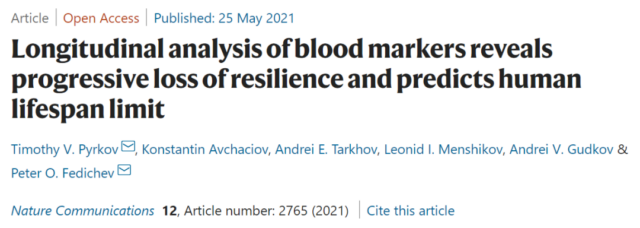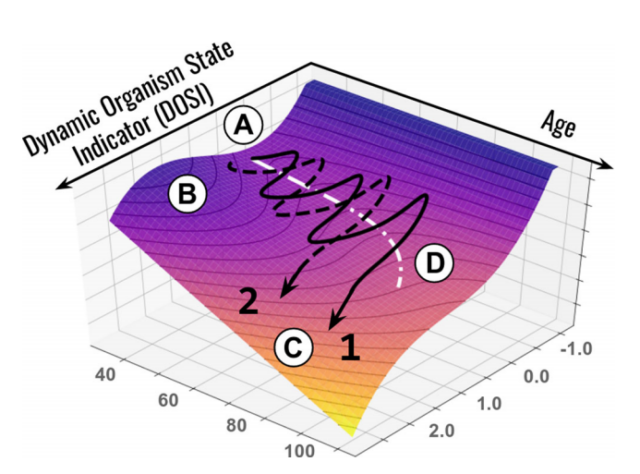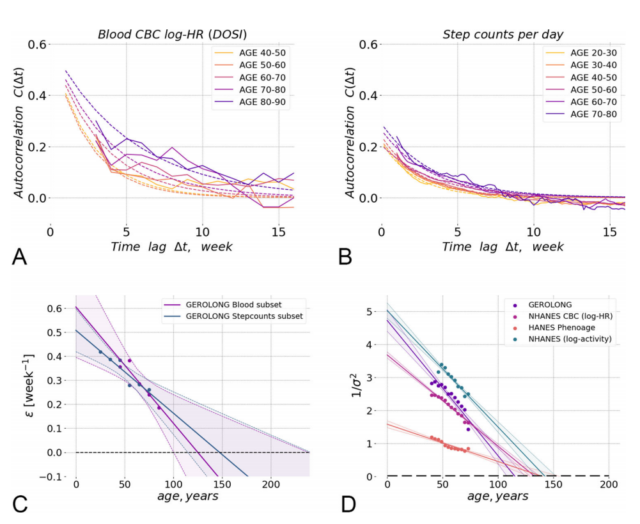Human life can be predicted by blood and is limited to 120-150 years
- Normal Liver Cells Found to Promote Cancer Metastasis to the Liver
- Nearly 80% Complete Remission: Breakthrough in ADC Anti-Tumor Treatment
- Vaccination Against Common Diseases May Prevent Dementia!
- New Alzheimer’s Disease (AD) Diagnosis and Staging Criteria
- Breakthrough in Alzheimer’s Disease: New Nasal Spray Halts Cognitive Decline by Targeting Toxic Protein
- Can the Tap Water at the Paris Olympics be Drunk Directly?
Human life can be predicted by blood and is limited to 120-150 years
Human life can be predicted by blood and is limited to 120-150 years. Currently, the oldest living person in the Guinness Book of World Records is Riko Tanaka of Fukuoka City, Japan, who is 118 years old.
In the 1960s, Leonard Hayflick, an gerontologist at the University of California, USA, used human epidermal cells as experimental subjects and discovered that human epidermal cells naturally divide approximately 50 times before they stop dividing. This experiment also proved that the number of human cell divisions has an upper limit, which is the famous “Hayflick upper limit.”
In normal human cells, the telomeres at the end of the chromosomes will continue to shorten as the cell divides (cancer cells have high telomerase activity and can repair telomeres). When the telomeres are shortened to a limit, the cells will stop dividing and the human body Will also be aging. Based on this, by analyzing and calculating the human cell division cycle and the upper limit of cell division, it can be inferred that the human life limit is about 120 years old.
On May 25, 2021, an international research team composed of Gero PTE in Singapore, Russia, the United States and other research institutions published in the journal Nature Communications the title: Longitudinal analysis of blood markers reveals progressive loss of resilience and predicts human life span limit research paper.
The study describes a new method that can be used to assess the process of biological aging-the dynamic organism status indicator (DOSI). Based on this assessment method, Timothy Pyrkov et al. stated that life limit is an inherent biological characteristic of organisms, which is independent of stress factors, which means that there is a basic and absolute limit to human life span-the maximum life span of human beings is about 120 -150 years.

Aging, specifically manifested as a gradual decline in body functions, leads to an exponential increase in the prevalence and incidence of age-related chronic diseases, such as cancer, diabetes, and cardiovascular diseases, and leads to an increase in the mortality rate of certain diseases.
The current understanding of the relationship between aging and changes in physiological variables in the life cycle of organisms mostly comes from large-scale cross-sectional studies, and has led to the development of increasingly reliable “biological clock” or “biological age” estimates, reflecting blood markers It was age-related changes, DNA methylation state or an active mode motion.
More importantly, changes in drugs, diet and lifestyle can delay the aging process to a certain extent. Therefore, it is necessary to better quantitatively understand the complex relationship between slow physiological state dynamics, elasticity and exponential morbidity and acceleration of mortality in order to rationally design, develop and clinically validate effective anti-aging interventions.
In this study, the research team used longitudinal human blood count data from the British Biobank and the National Health and Nutrition Examination Survey to develop a single variable describing biological age, which is called the “dynamic status indicator organisms” (DOSI).

Quantify the body’s aging process
First, the researchers observed that in the early stages of life, DOSI dynamics quantitatively follow a general ontogenic growth trajectory. Once the growth phase is complete, the indicator shows all expected biological age characteristics, such as the association with age, multiple morbidity rates, unhealthy lifestyles, mortality, and future incidence of chronic diseases.

The relationship between dynamic organism state index (DOSI) and way of life, vulnerability and health risks
In the later stages of life, the dynamics of DOSI capturing the state of the organism along a single aging trajectory is consistent with the dynamics of the random drift process of slow aging. Moreover, the increase in DOSI variability will be approximately linear with age. This phenomenon can be explained by the increase in the recovery time of the organism’s state.
Timothy Pyrkov, the first author of the paper, said: “Our analysis shows that for the 40 to 90 year old research cohort, the recovery time of DOSI fluctuations will increase with age. Through extrapolation, we predict that DOSI will eventually be 120-150 years old. the critical point between the loss of elasticity, thus indicating the absolute limits of human life.

Schematic diagram of loss of elasticity along the aging trajectory
All in all, this study proposes a new indicator to measure the aging process of the human body—Dynamic Organism State Index (DOSI). Studies have shown that DSI is related to expected variables such as age, disease, and lifestyle, and the recovery time from changes in DSI will continue to increase with age.

Fluctuations in physiological state and loss of resilience
Life is in a hurry, but a hundred years. Both the “Hayflick upper limit” and the “DOSI” indicate that there is a limit to the life span of human beings. Fortunately, the current average life expectancy of human beings is not close to the limit, and with the advancement of medicine and technology, the average life expectancy of human beings is increasing, and various anti-aging drugs and therapies have been discovered one after another.
Perhaps in the near future, the life span of human beings will usher in a dramatic increase, and even eventually break through the shackles of the limit life span!
(source:internet, reference only)
Disclaimer of medicaltrend.org



